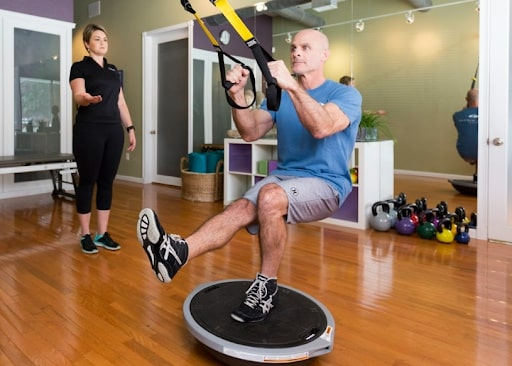9 Tips for Keeping Your Calorie Count in Check
To balance their energy intake and output to support their body composition targets, some people take the help of the calorie counting method. While intuitive eating may make it simple to maintain weight, many people find it more difficult to change their body weight in order to reduce fat or increase muscle.
Counting calories can help you achieve your goals if your doctor has advised weight loss for your health or if you’re aiming to gain muscle mass. When on a diet, one might eat too little and get too little nutrition. Others might consume too many calories to maintain weight. In this situation, monitoring calories can assist you in eating just the right amount.
Listed below are some useful tips to help you keep track of your calorie intake.
-
Measure Your Eating Portions Precisely
Don’t rely on just hunches when calculating portion amounts. People frequently underestimate the amount of food they eat. Additionally, there are some foods that we frequently overeat. The best example of this is cereal. People frequently pour too much cereal into their bowls, accidentally eating more than one portion.
Purchase a smart kitchen scale instead. You don’t have to use it at every meal, but every time you try a new item, weigh a part of it so you can gauge how much you should consume. If you know exactly how many grams were in your meal, you can calculate the correct number of calories regardless of whether you eat more or less than the serving size listed on the nutrition information label. As another option, you can look up the calorie details of your meal online and log in the amount you are consuming.
-
Take Advantage Of Tech Tools
It’s better not to rely solely on your memory to remember what you ate during the day. Even if you are able to recollect what you ate, it is often difficult to remember exactly how much you consumed. If your food record is not complete or the serving sizes are incorrect, you are unlikely to obtain an accurate calorie count.
Instead, think about utilizing a smartphone app that tracks your calories. Before you start eating, make a note of the calories in your meal. You might also carry a tiny notebook in your pocket. The idea is to have a portable technique for measuring your calorie intake.
-
Count Calories in Packaged Foods
It’s simple to calculate the calories in packaged foods. Simply read the nutrition label and note the number of calories. However, keep in mind that if you eat two portions, the labeled calorie count should be doubled.
-
Remember to Log In Restaurant Meals
Keeping track of the calories in restaurant meals might be challenging. It’s simple if you’re eating at a national chain restaurant because the FDA ruled in 2018 that all eateries with more than 20 locations must publish calorie information for every menu item. Although it’s not compulsory for local eateries to provide calorie counts, there’s a high chance your server can find out if you ask.
-
Logging Drinks
Remember to keep track of the calories in the drinks you consume throughout the day. Your daily calorie intake is impacted by the beverages you consume unless you just consume plain water and zero-calorie drinks. Be sure to keep track of the calories in your coffee, sports drinks, alcohol, soda, and juices.
-
Don’t Forget About Cooking Oil
Always measure the amount of cooking oil you use when preparing meals at home and record it in the food log. The number of calories in it might surprise you. Most individuals significantly underestimate how much cooking oil they use, which might have a negative impact on their calorie intake.
-
Don’t Forget About Sauces, Dips, And Salad Dressings
In an effort to eat healthier, you could make yourself a salad, but then you grab the dressing. Your salad will only have about 20 calories if it is the normal amount of 4 oz. A standard 2 tbsp. of dressing, however, could have up to 200 calories in it. The calories in that tiny amount of dressing could be much higher than in your entire salad!
People frequently use more salad dressing than they calculated. The additional calories could be more than those in a regular meal. Therefore, carefully track and measure your dressing. The same is true of any sauces and dips you might enjoy with your food.
-
Keep A Macro Log And Workout
Don’t restrict yourself to calorie counting. You can monitor other nutrients like fiber and salt intake depending on your tracking tool. Consuming enough fiber can enhance your health. If losing weight is the aim you and your doctor have decided on, also make sure you get the correct amount of exercise.
Consider tracking macronutrients like protein, carbs, and fat grams in addition to your overall calorie intake. When you enter your food into a food app, these numbers are immediately recorded.
-
Stay on Budget
It’s not necessary to spend a fortune on pricey tools. The costliest calorie counter isn’t always the best one for you. At every price range, there are a variety of tools and devices available. You use the one that is most effective. An efficient instrument doesn’t have to cost hundreds of dollars.
Before making a purchase, you might also want to take your lifestyle into account. For those who spend their days in front of a computer, online tools may be useful. A little notebook is useful for those who like the old-fashioned pen and paper method.
Conclusion
You can use calorie counting as a strategy to assist in achieving your body composition objectives. Most people should only use it temporarily because it might lead to compulsive behavior. But for many, calorie counting removes the stress of wondering if you’ve had enough or, in some situations, too much food. Calculating calories might liberate you from worrying about whether the foods you enjoy “fit” into your goals for energy balance.
Share this content:














Post Comment